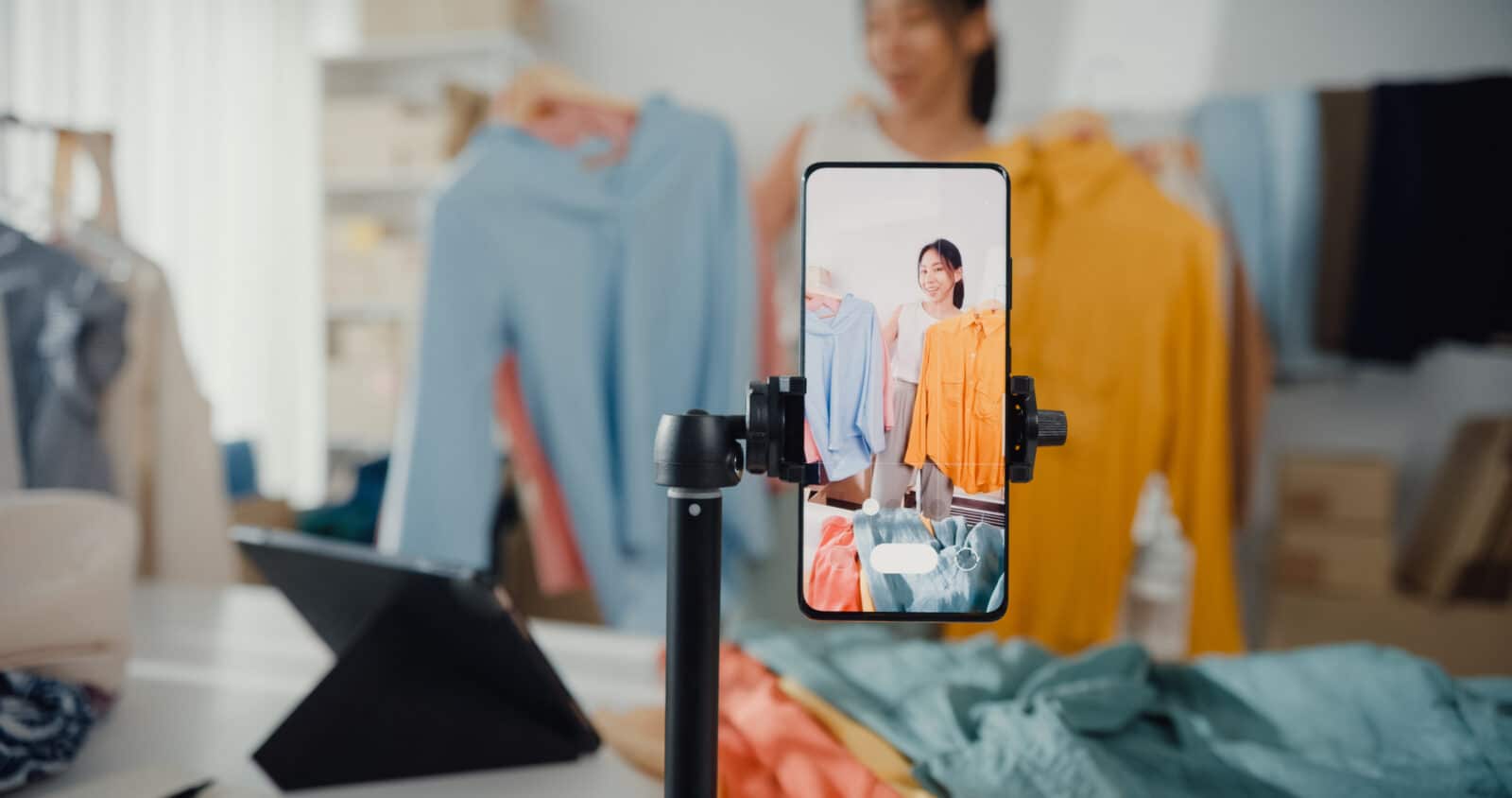If you haven’t jumped on Xiaohongshu, it’s time to get acquainted. From humble beginnings, this app has become Chinese social media's go-to destination for lifestyle content and social shopping.
The platform is wildly popular with young Chinese women in particular. It’s no wonder that some 140,000 brands are using it to connect with consumers in the East.
Want to nail your Chinese social media and marketing strategy on Xiaohongshu? You must understand the nuances of Chinese social media, build the right partnerships, and use the right tools to track and measure your campaigns.
In this post, we’ll look at key tips for marketing on Xiaohongshu. Discover why it’s so important for fashion and luxury brands, with real examples of the value it can drive.
Chinese Social Media: What is Xiaohongshu?
Xiaohongshu, also known as Little Red Book, RedBook (or, simply, RED), is often referred to as the Chinese equivalent of Instagram. While that’s a helpful shorthand for visualizing what it’s all about, the two apps have significant differences. Among other things, RED:
- Places a stronger emphasis on product recommendations, reviews, and shopping
- Has more powerful e-commerce integration
- Allows users to save product reviews and other content to boards, similar to Pinterest
- Has more robust search and discovery functionalities
- When debating your RED social media strategy, consider that one of the consumers' main uses of RED is sourcing authentic product reviews before buying. This means that, for millions of people, the app has become an important step along the pre-purchase journey. As well as this, shoppers use it for inspiration to seek out the latest fashion trends, beauty tips, and more.

Why is RED so important to luxury and fashion brands?
RED’s emphasis has always been on products and conversion. Fashion & beauty remains one of the top five categories by post views and search volume.
For international fashion and luxury brands, RED is the perfect place to uncover the latest Chinese consumer trends. Brands can then devise Chinese social media and marketing strategies that align with those trends. It also presents an unprecedented opportunity to gain visibility in the Chinese market. How? by connecting with consumers, building brand awareness, and driving direct sales of products. Some experts estimate that the platform has already captured 15% of online commerce in China.
Xiaohongshu User Base: Key Statistics
A major part of RED’s appeal to the fashion industry is its user base of primarily young, affluent, female consumers. Here are some key statistics:
- The monthly active users (MAU) of RED reached 200 million in 2022.
- 72% of users were born in the 1990s, making it a key platform for reaching millennials and Gen Z consumers.
- 90% of the total users in 2022 were from first– and second-tier cities.
- Around 80% of RED users are female.
How much MIV® do fashion brands get from RED?
When it comes to Chinese social media, exactly how much value can fashion brands drive from RED? We can use Media Impact Value™ (MIV®) to get a more accurate understanding.
MIV® is a proprietary algorithm created by Launchmetrics that measures the impact of a brand’s marketing activities. It assigns a monetary value to your campaigns so you can accurately determine their Return on Investment (ROI). For RED, that might look like the example below. Here, where we can see the difference in value driven by a KOL (Key Opinion Leader) vs a KOC (Key Opinion Consumer) in two posts about Dior.
Using MIV®, brands can tailor their Chinese social media strategy to find the mix of Voices and content types that drives the most value from RED.
CASE STUDY: Anta & Eileen House
Does your brand have a Red In 2022, sportswear brand Anta launched a pop-up store in Beijing inspired by celebrity ski champion Eileen Gu. Between announcements of the launch and posts by visitors, the store generated $2.5M in MIV® for the brand on social media.
Around $33k of that value came directly from KOLs and KOCs on RED, with the top KOL post on the platform generating approx. $5k in MIV®. This data is useful for optimizing future campaigns because it highlights which KOL tiers drive the highest ROI, which KOL accounts are worth re-engaging with, which types of content work best on which platforms, and more.
Marketing on Xiaohongshu: 5 Tips To Keep In Mind
For fashion and luxury brands to market themselves successfully on RED and build a social RED social media strategy, a deep understanding of the platform and its nuances is needed. Here are 5 tips for getting started.
1. Know your brand’s position
Where does your brand sit in the Chinese market in relation to your competitors? Understanding this provides a crucial foundation for building your presence and boosting your position in the landscape.
To gain the most insights from your competitive benchmarking, you need to use the right metrics and KPIs (once again, Media Impact Value is useful here to get a like-for-like comparison) and track against both close and upcoming competitors.
> Read more about how to do competitive benchmarking.
2. Set up your brand’s owned RED account
Businesses can open their own official brand account on RED. Managing this well is essential as it’s the one place on the platform where you have complete control over your brand message.
Fashion and luxury brands should actively engage with users through comments, respond to inquiries, and participate in community discussions. This will foster a sense of trust and loyalty as you grow your following.
3. Consider if traditional advertising is right for you
For brands that favor traditional advertising, RED offers two types of paid advertisements: pop-up ads and integrated ads. Pop-ups are displayed when the Xiaohongshu app is opened. Integrated advertising appears in news feeds alongside regular content.
Depending on their goals, this approach may or may not be the best fit for brands. Given that RED users are all about authenticity and genuine opinions, working with influencers may be a more profitable strategy.
4. Use Social Search Optimization
Whether posting to your brand’s owned account or collaborating with an influencer, focus on relevant keywords and hashtags. RED’s search algorithm heavily relies on these to surface relevant content to users, so incorporating them strategically into your post titles and descriptions improves your content's discoverability.
Make a content plan and post regularly, and bear in mind that long-form content is also popular on Xiaohongshu. Posting up to 1000 words gives more scope for incorporating keywords and optimizing for search.
5. KOL and KOC collaborations
When marketing on Chinese social media, brands need to be aware of the differences between Western influencers and Chinese ones – known as KOLs and KOCs – and design their campaigns accordingly.
KOLs have high engagement and broad influence. KOCs, the micro-influencers of China, tend to have fewer followers and lower engagement but high authenticity, and are also cheaper to work with.
One key to successful KOL marketing is using media monitoring technology to track all your social posts and mentions in real-time. This way, you can optimize campaigns as they run and access a valuable data set that can drive future decision-making. Launchmetrics Insights does this and more while using MIV® as a standardized metric to track ROI across platforms, channels, Voices, regions, and more.
If you want to find out more about how Insights can help your brand succeed with marketing on Xiaohongshu and other Chinese social media, click here.

